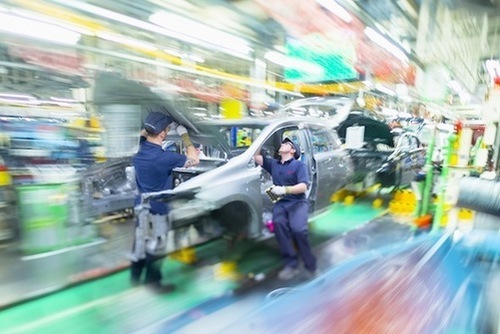May 1 2014
13 pillars of the Toyota Production System |Toyota UK corporate blog
See on Scoop.it – lean manufacturing

Thanks to Mark Graban for drawing my attention to this blog from Toyota UK and this article in particular. It is always useful to know Toyota’s official line about its own system. Corporate blogs are perversions of the concept of a blog, which is intended to be a conversation between an individual human and the rest of the world. When you read a post, you know who stands behind it and who will respond to your comments. Corporate blogs lack this authorial voice, and are a public relations exercise.
The first “pillar” in this article is the Konnyaku stone. I had never heard of it The only kind of Konnyaku I am familiar with is gelatinous slabs found in Japanese dishes. I didn’t know the name was used in polishing sheet metal, and I am still not sure what kind of a pillar of a production system it may be.
The picture illustrating the Andon paragraph does not appear related to the subject. An Andon board, on the other hand, is shown as an illustration of Kanban.
The picture on Jidoka shows automatic welding by robots, but the text only describes equipment “designed to detect problems and stop automatically when required,” without saying that it happens to be automatic. The paragraph also describes operators stopping production “the moment they spy something untoward,” which, while important, is not jidoka per se.
“Kaizen” is described as “a mantra for continuous improvement.” I thought it was just continuous improvement, not a mantra for it. The paragraph also states that it achieves “efficiency optimization.” If it did, however, you would be at an optimum, and continuous improvement would no longer be possible.
See on blog.toyota.co.uk
May 2, 2014 @ 8:32 am
TPS has certainly had a profound effect on how we believes manufacturing shoul be run… but in the United States and worldwide, Toyota leads the world in vehicular recalls due to quality issues. Are we subscribing to a failed process or are we expecting too much of TPS’s application value.
May 4, 2014 @ 2:42 pm
Michel – I agree with your observations. I noticed a number of odd things on the “blog” as well. Evolution or misunderstanding due to inadequate training? The latter.